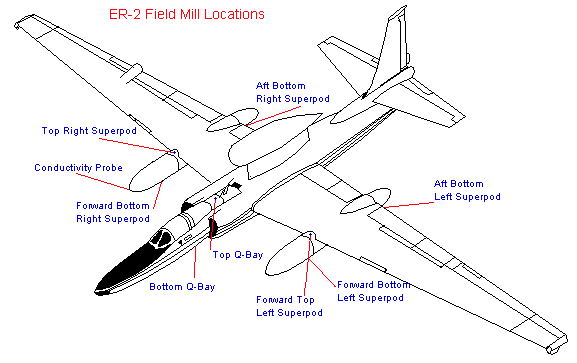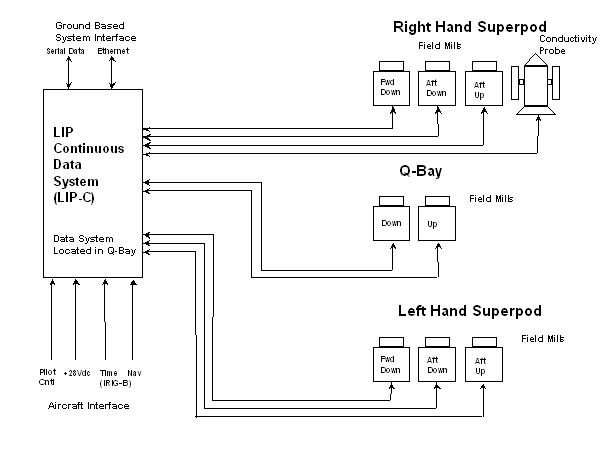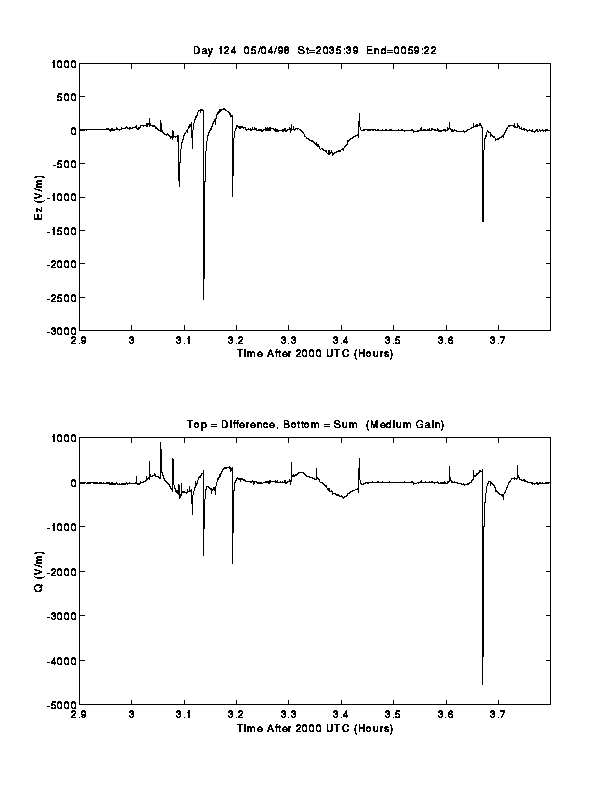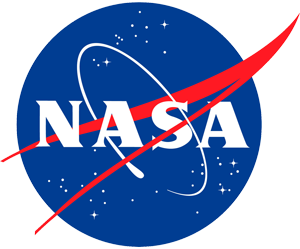CAMEX-3 Lightning Instrument Package (LIP)
Table of Contents
Instrument Description
The ER-2 Lightning Instrument Package (LIP) consists of eight electric field mills and a dual-tube Gerdien conductivity probe. An important instrumentation enhancement was made to LIP package in support of CAMEX-3 with the addition of six state-of-the-art electric field mills and an upgrade of the existing Q-bay field mills. This enhancement allows the vector components of the electric field (i.e., Ex, Ey, Ez ) to be readily obtained, and thus, greatly improves our knowledge of the electrical structure of storms overflown, particularly when the ER-2 passes storms off-center or encounters complex storm (and thus, charge and generator) geometries. Each field mill incorporates self-calibration capabilities that reduce the time required to obtain a full aircraft calibration. In addition, the electric field signals are digitized at each mill and transmitted as a digital data stream, reducing signal noise and simplifying aircraft integration. The ER-2 electric field mills and the conductivity probe are compact sensors, each weighing less than 10 lbs.
Field Mill Location and Data Collection System
The field mills are installed on the top and bottom of the aircraft just aft of the pilot's cockpit along the centerline of the plane (the bottom one is mounted on the aft section of the AMPR faring) and on the superpods (three mills per pod) as shown on the diagram to the right.

A schematic diagram of the ER-2 LIP instrumentation package is shown below. In this configuration, the field mills measure the components of the electric field over a wide dynamic range extending from fair weather electric fields (i.e., a few to tens of V/m) to large thunderstorm fields (i.e., tens of kV/m). The field mills also provide a measurement of the electric charge (Q) on the aircraft. Total lightning (i.e., cloud-to-ground, intracloud) is identified from the abrupt electric field changes in the data. Often it is possible to differentiate between intracloud and cloud-to-ground discharges. The conductivity probe is installed on either the right or left hand superpod nose cone. The conductivity probe measures the air conductivity at the aircraft flight altitude. The probe consists of a pair of Gerdien capacitor type sensors so that the contributions to the total conductivity due to positive and negative ions are obtained simultaneously throughout each flight. Storm electric currents can be derived using the electric field and air conductivity measurements
.
Data Products
The data products produced by ER-2 LIP system includes:
- Electric field components (Ex, Ey, and Ez)
- Aircraft self-charge (EQ)
- Period: continuous record, entire flight
- Resolution: 0.1s (but data is oversampled at 50 Hz)
- Comments: Total lightning (cloud-to-ground, intracloud) can be determined from electric field changes in the data. Data will also provide information on the electrical structure within and around the thunderstorms and hurricanes encountered (often this will be the only means to assess the electrical state of the clouds overflown). The electric currents flowing above storms can be derived using the electric field and air conductivity measurements.
- Air conductivity period: continuous record, entire flight
- Resolution: 0.1s (but data is oversampled at 50 Hz)
- Comments: Simultaneous measurements provided of both polar components of the air conductivity (i.e., contributions from positive and negative ions). Storm electric currents can be derived when used with the electric field data.
Data Format
LIP data is in HDF format. For information about HDF, see the HDF homepage. There you will find a plethora of readers for HDF version 4 data, the version in which these data are written.
Data include field mill data, conductivity probe temperatures from two probes, and navigation data (latitude, longitude, true heading, pitch angle, roll angle, groundspeed, track angle, inertial windspeed and direction,
among the fields).
Additionally, browse imagery is available for this dataset. An example is shown below:

Contact Information
The data producer is:
Dr. Monte Bateman
NSSTC
320 Sparkman Dr.
Huntsville, AL 35805
To order these data or for further information, please contact:
Global Hydrology Resource Center
User Services
320 Sparkman Drive
Huntsville, AL 35805
Phone: 256-961-7932
E-mail: support-ghrc@earthdata.nasa.gov
Web: http://ghrc.nsstc.nasa.gov/
|

